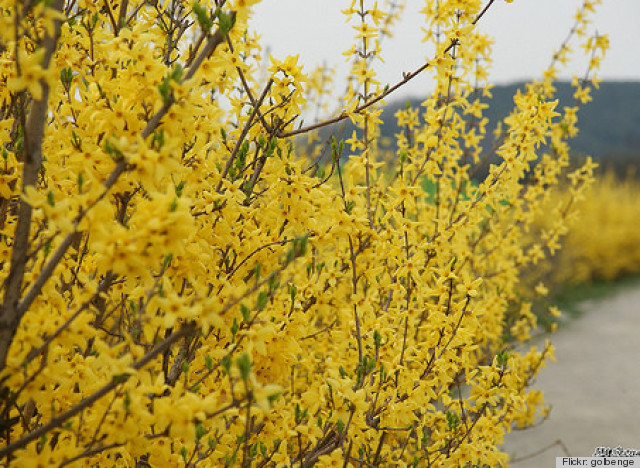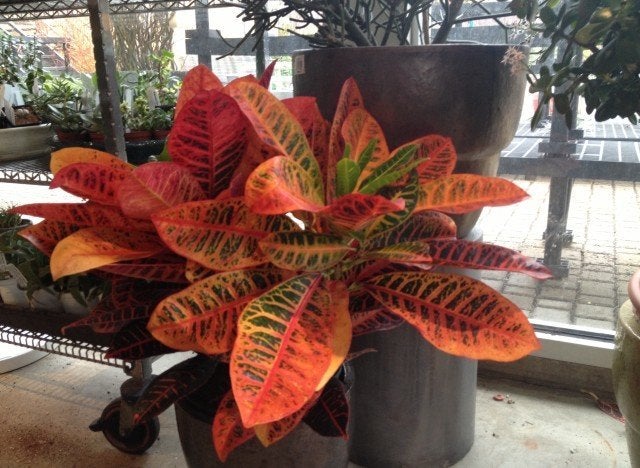It's finally that time again when our gardens start waking up: bulbs break through the soil, trees and shrubs begin to bud, and cracks of color can be seen. Among the awakening plants is the Forsythia Bush, which you'll immediately notice, since it will stop you in your tracks with its showy bright bloom. The Forsythia is a flowering deciduous shrub in the olive family and one of the first things to emerge in the garden with its yellow (or occasional pink) four-lobed flowers which typically appear before its leaves. In rainy weather, the flowers can become pendant-like, bringing about the common name 'Golden Bells.'
The two types of Forsythia that are commonly cultivated for ornamental purposes are Forsythia x intermedia and Forsythia suspensa. Both are rugged, tough and reliable. Forsythia x intermedia is more commonly used in smaller landscapes since it stays on the shorter side with an upright habit. Meanwhile, the Forsythia suspensa is large and is normally weeping in the landscape, making a statement on banks. Its flowers are slightly more pale than the Forsythia x intermedia. The Forsythia suspensa is also considered one of the fifty fundamental herbs in Chinese herbology, where its fruit is used for treating the common cold and allergies.

Photo by Flickr: GOLBENGE
Though these fast growers are best left in full sun, they can tolerate part shade. Prune your forsythia bush after flowering to encourage new growth by cutting back by one third. You can also tip prune them to keep them bushy and full. You can propagate the Forsythia by taking cuttings from green wood after it flowers in late spring. They are easily propagated by weighing pendulous branches and allowing them to take root on the ground. From there, the rooted branch can be cut from the main shrub to create a new plant. Forsythias are best served in the landscape as border plants and can create thick landscape screens. However, if you have a small garden space, do not be afraid to try Forsythia x intermedia to get your early spring fix.
For more great ideas, be sure to look through Tara Heibel's Plant Of The Week slideshow below.
Have something to say? Check out HuffPost Home on Twitter, Facebook, Pinterest, Tumblr and Instagram.
**
Do you have a home story idea or tip? Email us at homesubmissions@huffingtonpost.com. (PR pitches sent to this address will be ignored.)
